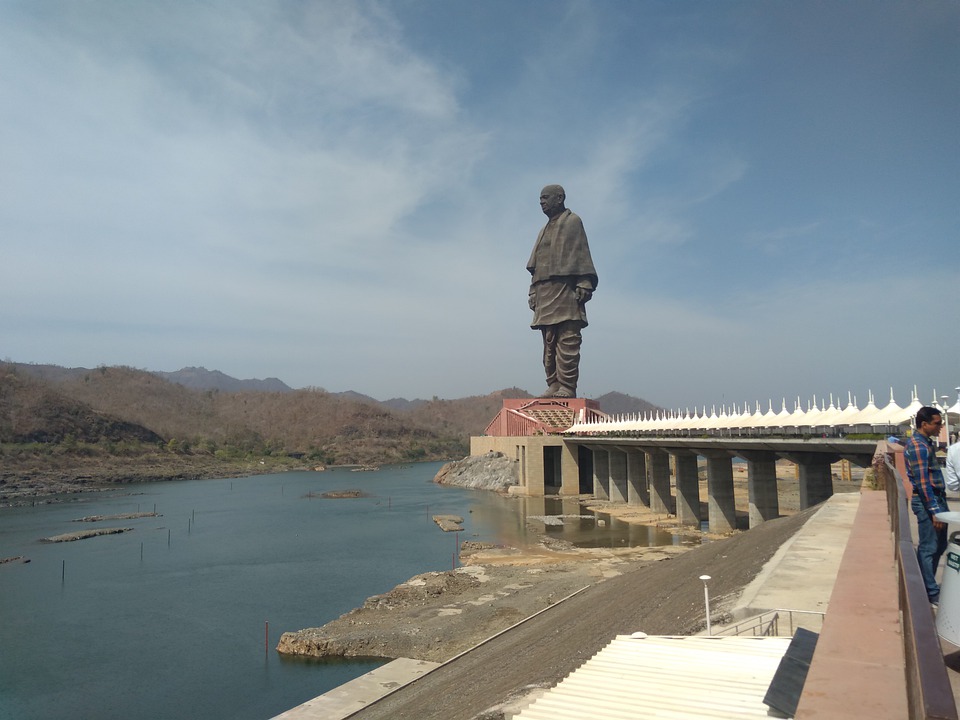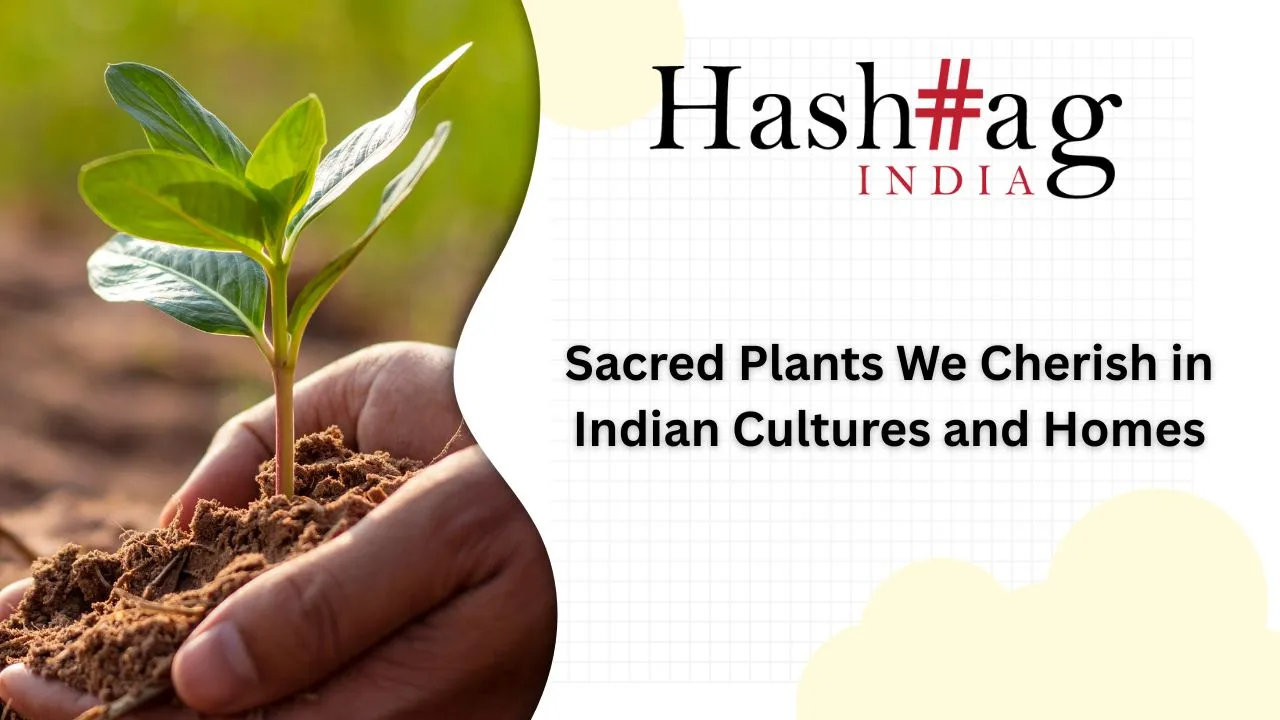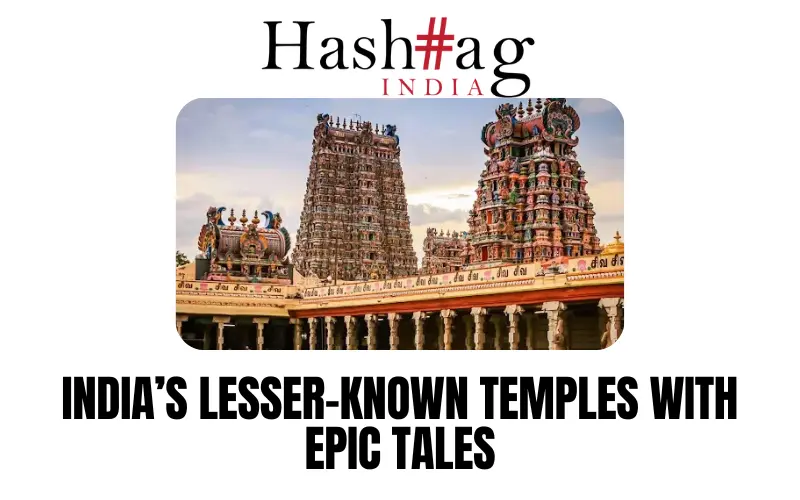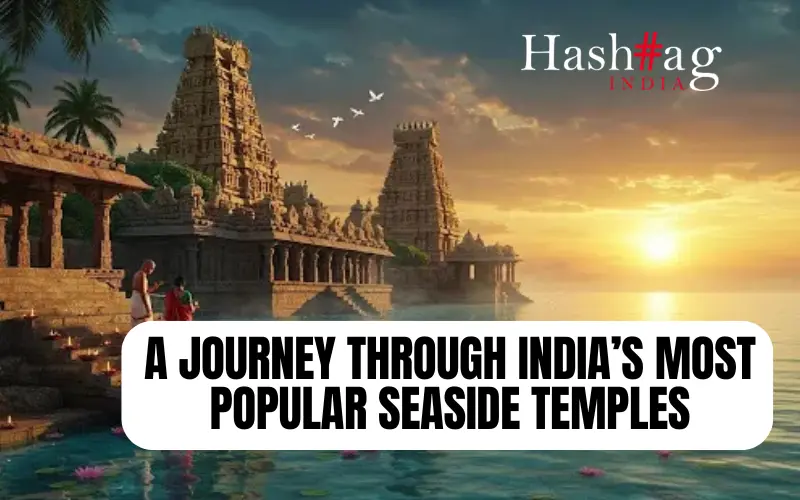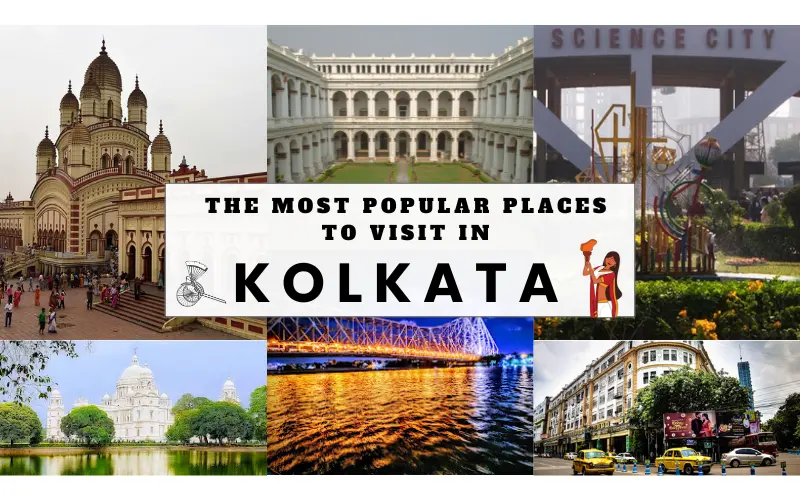India is home to many wonderful statues that are built to promote the different cultures and traditions of our country. Here are some of the popular statues in India which have great heritage values.
Statues are established as a symbol of respect towards the people who have worked for the betterment of society. If you are passionate about travelling and exploring different places, then these marvellous architectural wonders are also excellent tourist spots that can take your breath away.
1)Statue of Equality
The Statue of Equality is a 216-foot tall statue dedicated to 11th-century saint Ramanuja Charya. The idea for bringing up this statue was to celebrate 1000 years of Ramanuja’s birth and promote Equality amongst humanity. The major part of the project was paid through the donations of devotees and trust members. The main attractions of this place are the Laser Light Show, Fountain Show, the Golden Statue in the museum, and the library. The statue was inaugurated in February 2022.
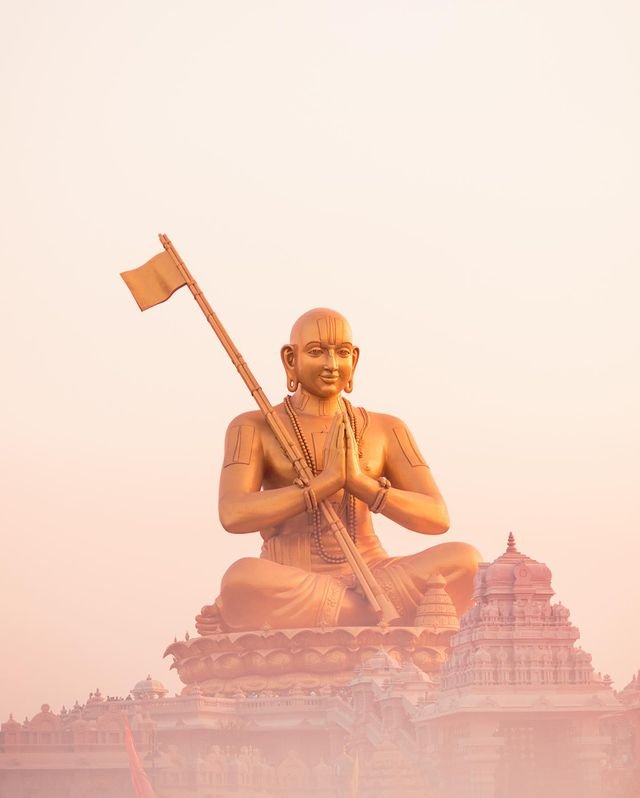
Location: Muchintal, Hyderabad
Timings: 3 PM-8:30 PM (Monday to Friday), 11 AM-8:30 PM (Saturday-Sunday)
2)Statue of Unity
The World’s tallest statue is in Gujarat created as a memorial to the Iron Man of India, Sardar Vallabhai Patel. The bronze statue stands at a height of 597 feet on the river island of Sadhu, overlooking the Narmada Dam. The viewing gallery gives a wonderful panoramic view of the surroundings.
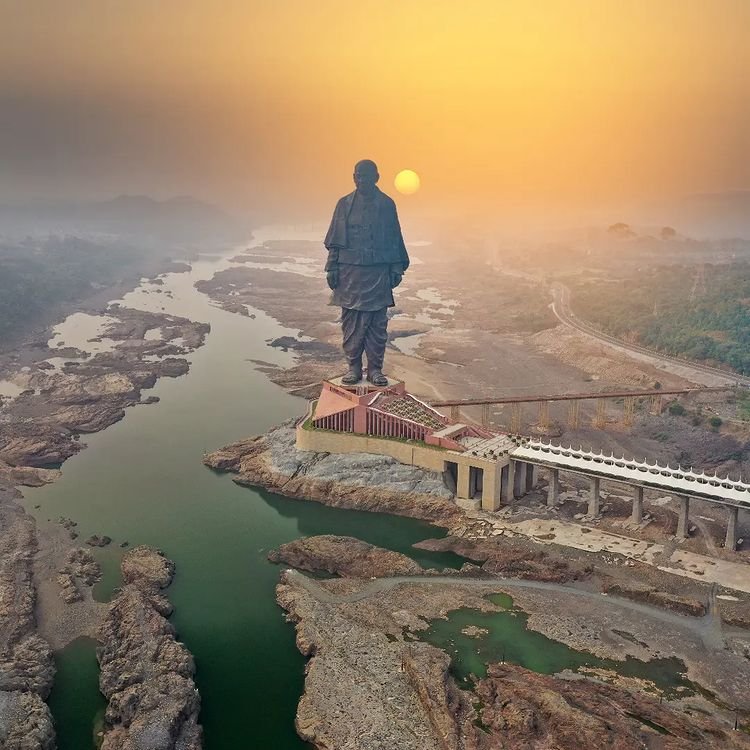
Location: Gujarat
Timings: 9 AM to 6 PM
3)Paritala Anjaneya Temple
Paritala Anjaneya Temple is located near Vijayawada, Andhra Pradesh. It is popular for hosting the world’s tallest Hanuman statue, known as the Veera Abhaya Anjaneya Hanuman Swami, which stands at a height of 135 feet. The statue was inaugurated in the year 2003. Every year thousands of devotees visit this temple to see this gigantic statue.

Location: Vijayawada, Andhra Pradesh
Timings: 24hours
4)Thiruvalluvar Statue
Thiruvalluvar Statue is dedicated to the poet and philosopher Thiruvalluvar who is a legend in the world of literature. The monument stands at a height of 133 feet on a small island near Kanyakumari. A short boat ride will help you reach this beautiful place and there is also a temple that is a perfect spot for meditation.

Location: Kanyakumari
Timings: 9 AM- 4 PM
5)Tathagata Tsal Statue
One of the popular spots of Sikkim is the Tathagata Tsal Statue, popularly known as Buddha Park of Ravangla. This beautiful landscape attracts travellers from different countries and the main attraction of the park is the 130 feet Buddha statue. Sikkim’s state people and government have put in equal efforts to build this beautiful place.
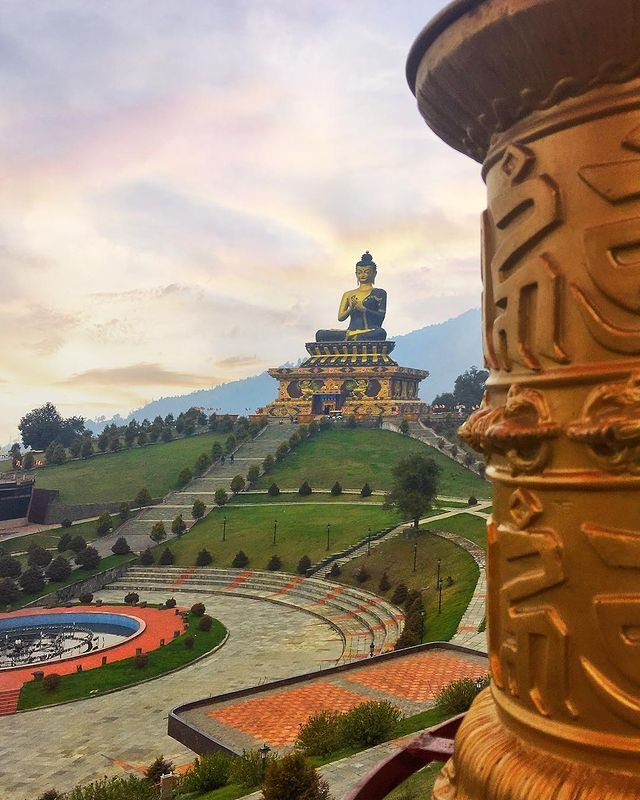
.
6)Adiyogi Statue
Adiyogi means the first yogi. This statue is located at the foothills of the Velliangiri Mountains and is dedicated to Lord Shiva. The statue stands at a height of 112 feet and it is the world’s biggest bust statue. Sadhguru Jaggi Vasudev, the founder of Isha Foundation, has designed this statue. Every year, Mahashivatri and Guru Pournami are celebrated grandly at this place.
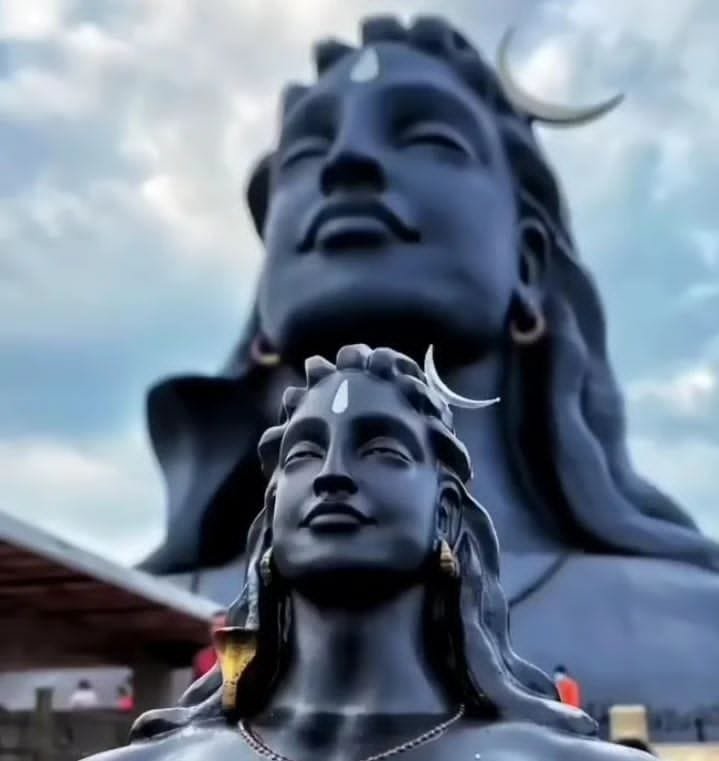
Location: Coimbatore, Tamil Nadu
Timings: 6 AM-8 PM
7)Murudeshwar Temple
One of the popular spots in Karnataka is the beautiful Murudeshwar Temple dedicated to Lord Shiva. The main attraction of the temple is the statue of Lord Shiva which stands at 123 feet. A huge gopura welcomes the devotees into the temple and we can also go up to the top of the gopura to witness the magnificent view of the statue.

Location: Murudeshwar, Karnataka
Timings: 3 AM-1 PM and 3 PM-8 PM
8)Dhyana Buddha Statue
Dhyana Buddha Statue is located in Amaravati, Andhra Pradesh. It is one of the tallest Buddha statues in India, standing at a height of 125 feet, facing the river Krishna. The statue was inaugurated in 2015. This is a perfect spot for people to relax and meditate peacefully. There is also a seminar hall and luxury suites for the tourists visiting from different parts of the world.
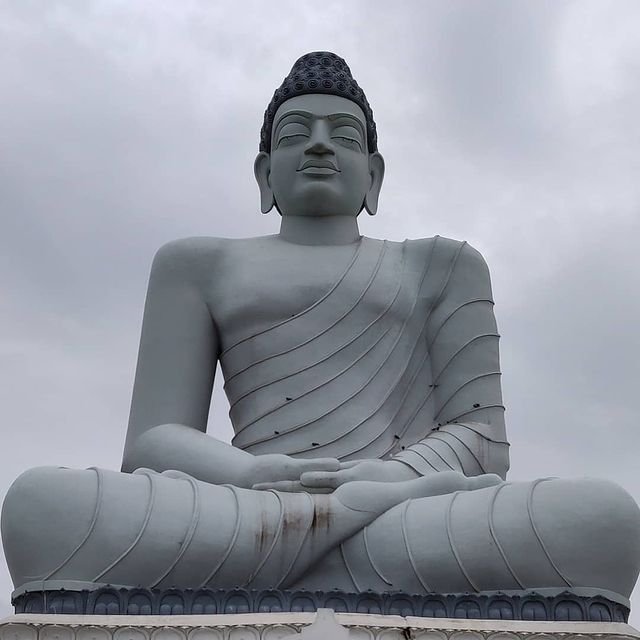
Location: Amaravathi, Andhra Pradesh
Timings: 8 AM-6 PM (Monday to Sunday)
9)Gangadhareshwara Statue
Aazhimala Shiva statue, popularly known as Gangadhareshwar Statue, is the tallest statue located inside Aazhimala Shiva Temple. The statue stands tall at a height of 58 feet with sea waves pondering on the backside and a beautiful hill temple opposite to it. The cliff view from the top gives a breathtaking view for the tourists.
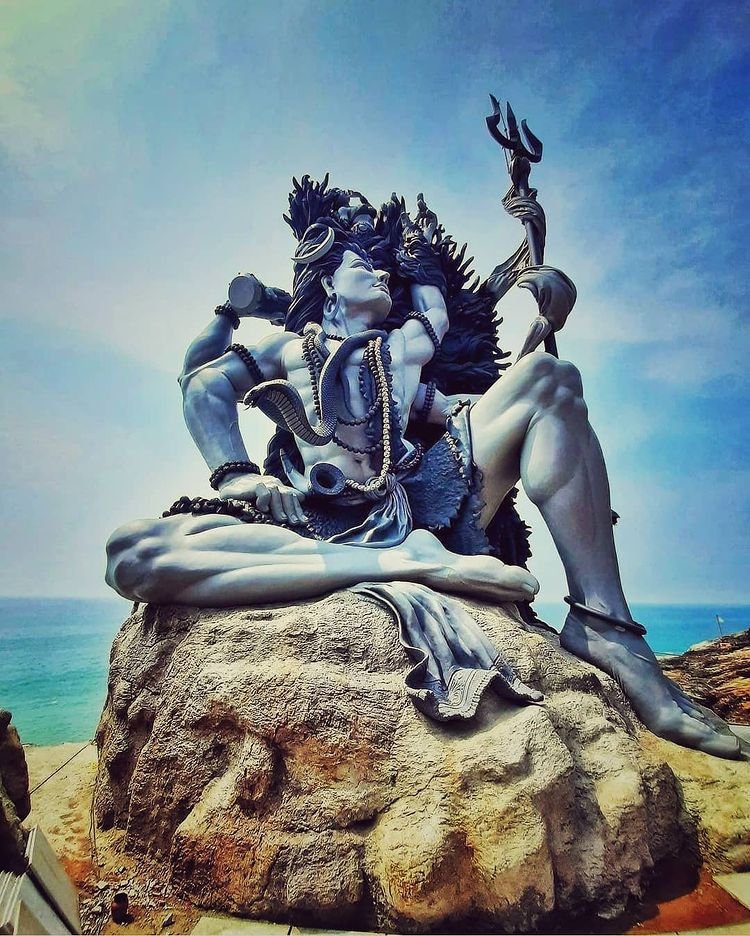
Location: Thiruvananthapuram, Kerala
Timings: Open all day
10)Great Buddha Statue
One of the popular tourist spots in Bihar is the Great Buddha Statue. It is one of the gigantic statues in India depicting Lord Buddha in a meditative pose. The statue was inaugurated by the 14th Dalai Lama in 1989. The beautiful statue of Lord Buddha stands at a height of 64 feet. Many Buddhists from different countries visit this beautiful place every year.
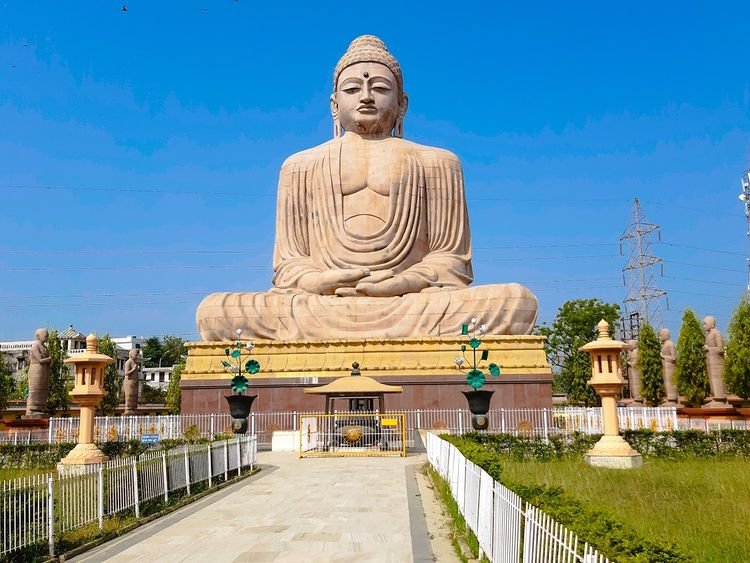
Location: Bodh Gaya, Bihar
Timings: Open all day
These are some of the popular statues in India to visit to experience the marvellous wonders of architecture. Very soon India is going to establish some other big statues, such as that of Chatrapathi Sivaji in Mumbai, Lord Rama’s Statue in Ayodhya, B.R.Ambedhkar’s Statue in Hyderabad, and Lord Shiva’s Statue in Rajasthan.

